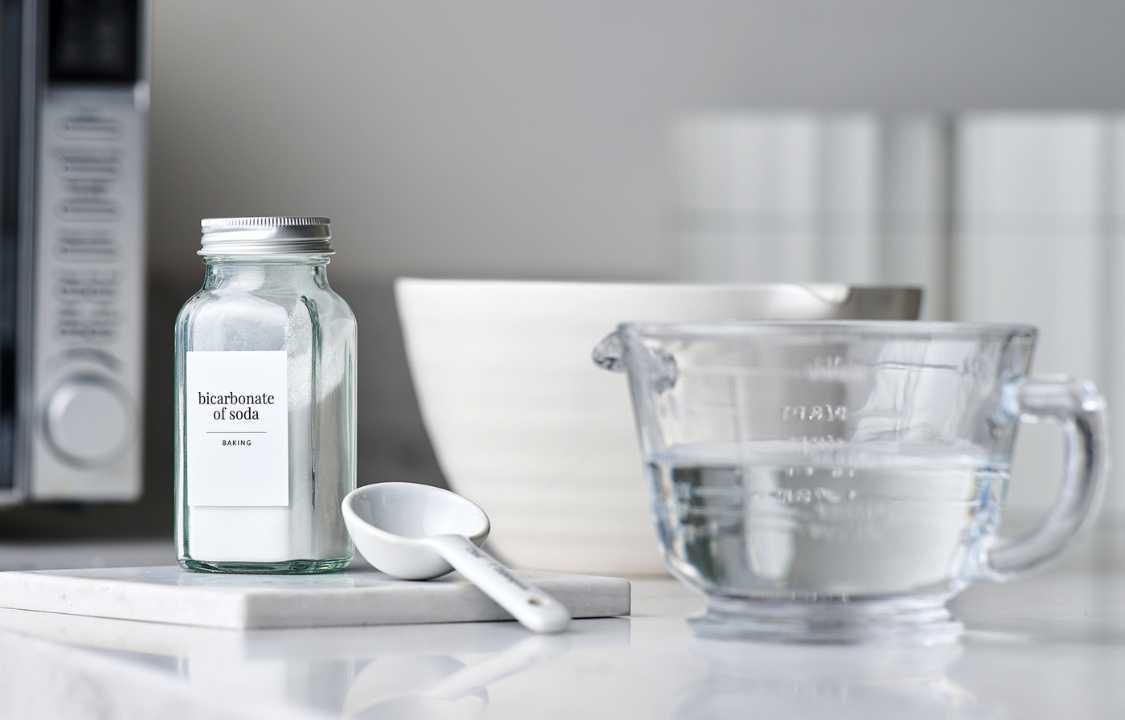It’s a fantastic tool for cleaning, but it could cause damage if used in these areas…
Bicarbonate of soda, commonly known as baking soda, is a household staple that transcends its traditional role in baking. While it plays a crucial part in whipping up delicious treats, it also reveals itself as a versatile and cost-effective cleaning agent. This wonder ingredient boasts natural abrasive, antibacterial, and deodorizing properties, making it a go-to choice for a wide range of cleaning tasks. Whether used alone or in conjunction with other cleaning agents like water or white vinegar, baking soda can efficiently tackle stains, odors, and grime, transforming your cleaning routine into an eco-friendly and budget-friendly endeavor.
However, not all cleaning tasks are suited for the gentle touch of baking soda. In fact, its use in certain areas of your home can be counterproductive and potentially harmful. To harness the cleaning power of baking soda effectively, it’s crucial to discern where it shines and where its application should be avoided.
Where Baking Soda Should Not Be Used for Cleaning
While baking soda is a cleaning champion in many situations, there are specific surfaces and materials where its use is ill-advised. Let’s explore these areas to ensure you protect your home and belongings during your cleaning endeavors.
1. Aluminium Surfaces
Aluminium items and surfaces, such as tables, picture frames, and lamps, should be kept far from baking soda, especially when prolonged use is involved. Cleaning expert Lucy Rhead at Gtech emphasizes this caution, explaining that bicarbonate of soda can induce oxidation in aluminium. Over time, this oxidation process can alter the surface’s color, potentially turning it brown with repeated use. Stephen Tombs, founder of Quean Clean, concurs, warning against using baking soda on expensive surfaces requiring specialized cleaning products. To preserve the integrity of your aluminium belongings, opt for suitable cleaning agents.
2. Wooden Furniture and Floors
The abrasive nature of baking soda, which makes it excellent for cleaning some surfaces, renders it unsuitable for cleaning wooden surfaces, including floors and furniture. According to Lucy from Gtech, the abrasive quality of bicarbonate of soda can harm wood, potentially damaging its finish or sealants. Additionally, the ingredient’s acidity can react with the wood, leading to discoloration. For the care and maintenance of your wooden items, it’s wise to steer clear of baking soda as a cleaning agent.
3. Marble Surfaces
While baking soda can effectively remove stains from marble surfaces initially, it’s not the recommended choice due to potential long-term damage. Marble worktops and kitchen islands may benefit from baking soda’s stain-lifting capabilities, but continuous use can compromise the protective layer, leading to damage and diminishing the surface’s quality. Scratches and grooves may become evident, impairing the finish. Stephen from Quean Clean advises against using baking soda on delicate or polished surfaces like stainless steel, marble, or granite countertops. To avoid scratching or dulling, opt for specialized cleaning agents designed for these surfaces.
4. Glass Surfaces
Glass, whether in the form of delicate glassware or windows and doors, should never be cleaned with baking soda. Applying baking soda directly to glass surfaces can result in significant damage and unsightly scratches. Lucy from Gtech emphasizes that, as a natural abrasive, baking soda has the potential to harm glass. Instead, opt for dedicated glass cleaning sprays when dealing with mirrors, windows, or any other glass surfaces. Learn the proper techniques for cleaning windows without relying on baking soda to preserve the clarity and shine of your glass fixtures.
In summary, baking soda stands as a truly remarkable cleaning agent, boasting a wide array of applications that can transform your household cleaning routine. Its natural properties, combined with its cost-effectiveness and eco-friendliness, make it a versatile choice for tackling various cleaning challenges within your home. Yet, as with any cleaning product, it’s crucial to approach its usage with a degree of caution and to be mindful of selecting the most appropriate cleaning agents for specific surfaces and materials. This thoughtful approach ensures that you not only achieve exceptional cleaning results but also safeguard the integrity and longevity of your beloved belongings.
One of the most outstanding features of baking soda is its natural and non-toxic nature. This characteristic is particularly appealing for those who prioritize environmentally friendly cleaning solutions and the well-being of their household members, including pets and children. Unlike many commercial cleaning products that contain harsh chemicals and fragrances, baking soda is gentle yet highly effective, making it a safe and sustainable choice for a variety of cleaning tasks.
In the realm of kitchen cleaning, baking soda shines as a go-to option for tackling stubborn stains, eliminating odors, and even degreasing surfaces. Its abrasive yet non-scratch texture makes it ideal for scouring pots and pans, while its deodorizing properties work wonders in eliminating lingering food odors from appliances like refrigerators and microwaves. Baking soda can also be enlisted in the battle against mineral deposits in kettles and coffee makers, leaving them clean and functioning optimally.
In the bathroom, baking soda’s versatility knows no bounds. From scrubbing away soap scum on shower doors and tiles to whitening grout and banishing bathroom odors, it proves to be a formidable ally in maintaining a sparkling and hygienic space. And let’s not forget its role in personal grooming, where it can double as an eco-friendly alternative to commercial toothpaste or a soothing additive for a relaxing bath.
Nonetheless, while baking soda is a multi-purpose wonder, it’s crucial to exercise discernment when deploying it in your cleaning endeavors. Some delicate surfaces or materials may not respond well to its abrasiveness, and certain cleaning tasks may require specialized products. Therefore, it’s advisable to conduct a small patch test on inconspicuous areas before using baking soda extensively.
By harnessing the power of baking soda wisely and integrating it into your cleaning routine as appropriate, you can enjoy a cleaner, more sparkling home while taking conscious steps toward a greener and more sustainable lifestyle. In doing so, you not only enhance the beauty and cleanliness of your living space but also contribute to the well-being of your family and the environment. So, consider baking soda as your trusty cleaning companion, and watch as your home radiates freshness and cleanliness with each use.

